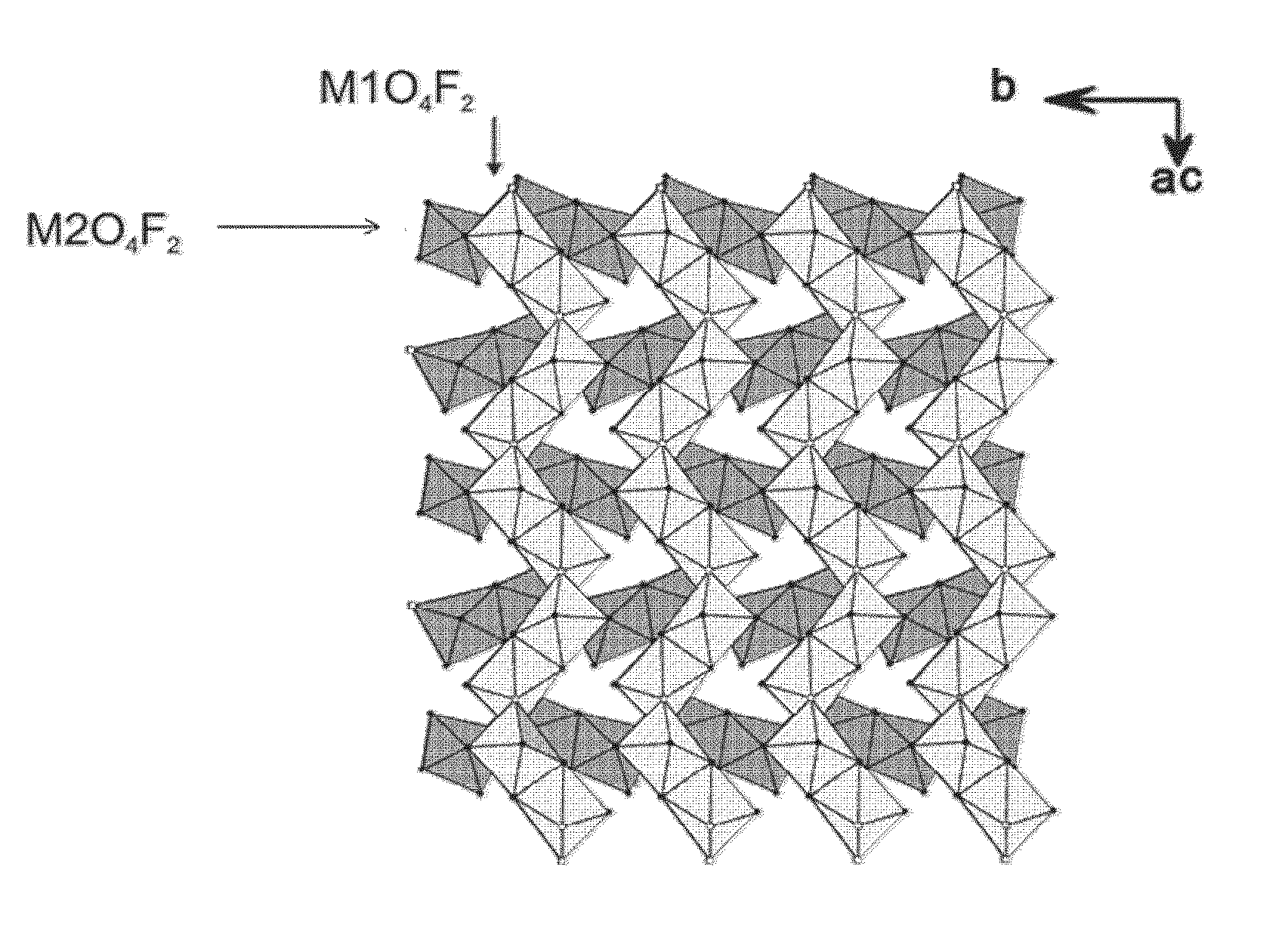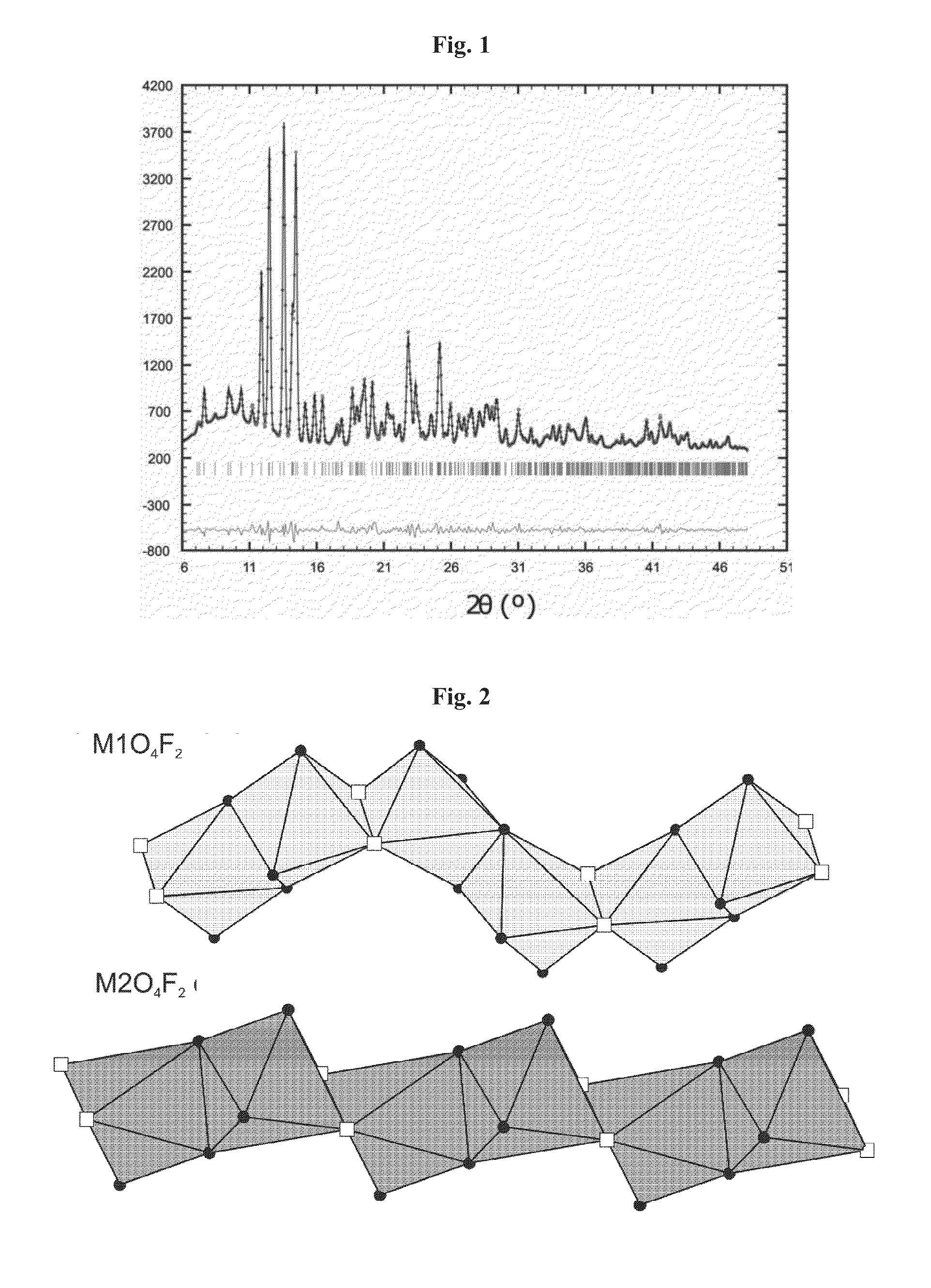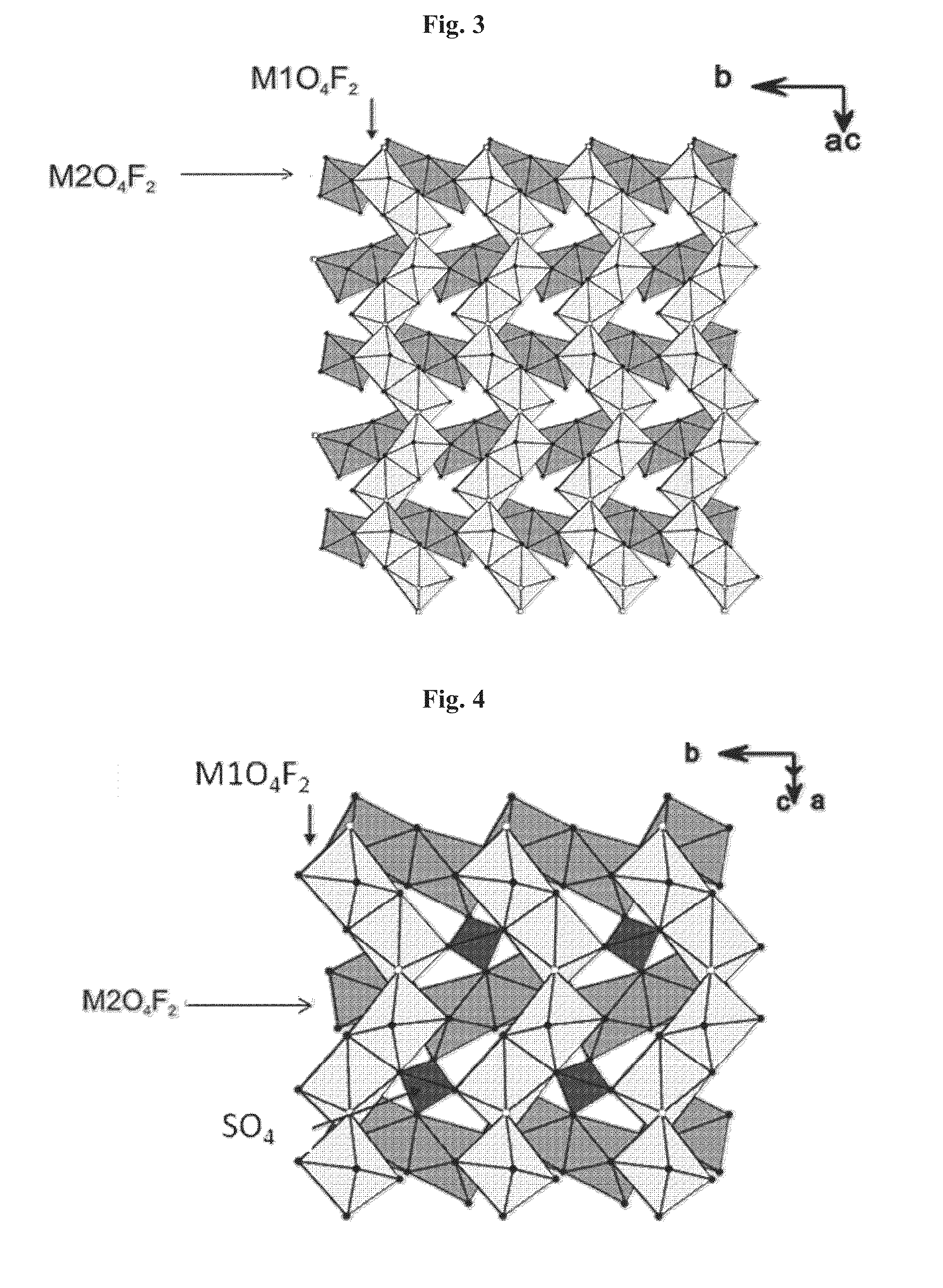Novel fluoro material which may be used as an electrode active material
a fluoroactive material and electrode technology, applied in the direction of cell components, iron sulfates, physical/chemical process catalysts, etc., can solve the problems of high potential, low compactness, safety problems of batteries, etc., and achieve the effect of increasing heating time, promoting the formation of triplite phases, and high stability temperatur
- Summary
- Abstract
- Description
- Claims
- Application Information
AI Technical Summary
Benefits of technology
Problems solved by technology
Method used
Image
Examples
example 2
Dry Route
[0090]Working in a glovebox under argon, an equimolar mixture of LiF and of Fe and Mn mixed sulfate monohydrate was prepared in a ball mill (Spex 800) for 15 minutes, 1 g of the mixture was compacted in the form of a pellet which was introduced into a Teflon®-coated reactor, and the mixture was heated at the rate of 5° C. / min up to 295° C. and maintained at this temperature for a certain time.
[0091]Various experiments were performed, by using a mixed sulfate with different contents x and by maintaining the temperature at 295° C. for different times.
[0092]The synthesis is complete after 24 hours, but a longer heating time improves the crystallographic quality of the material.
X-Ray Diffraction Characterization
[0093]The LiFe1-xMnxSO4F materials obtained in the various experiments were characterized. The lattice parameters are given in the table below, as a function of the value of x. They confirm the triplite structure (C2 / c).
xa (Å)b (Å)c (Å)α (°)β (°)γ (°)V (Å3)0 5.1747 (3)5....
example 3
Ionothermal Route
[0099]An equimolar mixture of mixed sulfate monohydrate Fe0.8Mn0.2SO4.H2O and of LiF was prepared in a ball mill (Spex 800) for 15 minutes, 1 g of mixture was introduced into a Teflon®-coated reactor, and 5 ml of ethylmethylimidazolium bis(trifluoromethane-sulfonyl)imide (EMI-TFSI) were added. The mixture was stirred for 20 minutes at room temperature while leaving the reactor open, and was then heated at a rate of 5° C. / min up to 310° C. and maintained at this temperature, without stirring.
[0100]After cooling the reaction mixture to room temperature, the powder obtained was separated out by washing the ionic liquid twice with ethyl acetate, and was then dried in an oven at 60° C.
[0101]Various tests were performed by modifying the time of maintenance at 310° C. The triplite structure appears at and above 7 days of maintenance at this temperature.
[0102]The materials obtained in the various experiments were characterized.
TEM Characterization
[0103]High-resolution TEM m...
example 4
Comparative
LiFe1-xMnxSO4F Solid Solution of Tavorite Structure
[0105]A compound LiFe1-xMnxSO4F was prepared from LiF and from a solid solution Fe1-xMnxSO4.H2O as precursor.
Preparation of the Solid Solution LiFe1-xMnxSO4F
[0106]The synthesis was performed via the ionothermal route in an autoclave at 270° C., for various precursor samples.
[0107]A mixture of 0.85 g of Fe0.5Mn0.5SO4.H2O and 0.149 g of LiF (mole ratio 1 / 1.14) prepared in a mortar was introduced into an autoclave containing 3 ml of 1-ethyl-3-methylimidazolium bis(trifluoromethane-sulfonyl)-imide (EMI-TFSI), the mixture was subjected to magnetic stirring for 20 minutes at room temperature, stirring was stopped and 2 ml of ionic liquid (EMI-TFSI) were added, and the mixture was kept at room temperature for 30 minutes without stirring. After closing the autoclave under argon, the assembly was placed in an oven at 200° C., the oven temperature was increased by 10° C. every 20 minutes up to 270° C., and maintained at this value ...
PUM
| Property | Measurement | Unit |
|---|---|---|
| Temperature | aaaaa | aaaaa |
| Temperature | aaaaa | aaaaa |
| Temperature | aaaaa | aaaaa |
Abstract
Description
Claims
Application Information
 Login to View More
Login to View More - R&D
- Intellectual Property
- Life Sciences
- Materials
- Tech Scout
- Unparalleled Data Quality
- Higher Quality Content
- 60% Fewer Hallucinations
Browse by: Latest US Patents, China's latest patents, Technical Efficacy Thesaurus, Application Domain, Technology Topic, Popular Technical Reports.
© 2025 PatSnap. All rights reserved.Legal|Privacy policy|Modern Slavery Act Transparency Statement|Sitemap|About US| Contact US: help@patsnap.com



